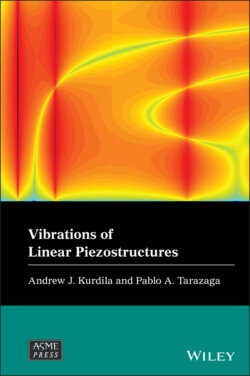Читать книгу Vibrations of Linear Piezostructures - Andrew J. Kurdila - Страница 16
1.2 Applications
ОглавлениеWhile the earliest applications of the piezoelectric effect were mostly related to ultrasound generation or sound measurements, the commercially viable applications of piezoelectricity have grown remarkably in diversity since that time. A quick survey of companies such as PCB® or PI Ceramics® that offer a broad range of piezoelectric devices can quickly convey the breadth of applications. For example, PI Ceramics notes that a piezoelectric device finds use in “…high‐end technology markets, such as medical technology, mechanical and automotive engineering or semiconductor technology, but is also present in everyday life, for example as a generator of ultrasonic vibrations in a cleaning bath for glasses and jewelry or in medical tooth cleaning.” The companies PCB® [36] and PI Ceramics® [37] include descriptions of broad applications areas. Even within each of these areas, the specific inventory of applications can be vast. Accelerometers, for example, are but one specific class of piezoelectrically‐based sensor that are used to measure vibration, shock, and acceleration for testing, control, online estimation, and system monitoring. The company PCB® [36] notes on http://www.pcb.com/TestMeasurement/Accelerometers that their products in this niche of sensors support applications in “…balancing, bearing, analysis, biomechanics, building vibration monitoring, biomechanics, bridge monitoring, component durability testing, crash testing, drop testing, fatigue testing, gearbox monitoring, environmental testing, ground vibration testing, impact measurements, impulse response measurements, machinery vibration, modal analysis, package testing, product qualification, quality control, seismic monitoring, structural testing, structure‐borne noise, vibration analysis, vibration isolation, and vibration stress screening.”
Despite the growth of the applications of piezoelectric technology catalogued above, it is common that they are often grouped into three general categories: energy applications, sensors, and actuators or motors. We discuss these next.
